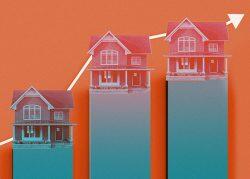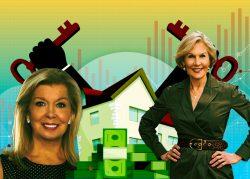After reaching record-breaking lows during the pandemic, mortgage rates have been climbing at a similarly historic pace this year, worrying brokers and especially buyers. This week, rates reached another milestone.
The average 30-year fixed mortgage rate throughout the U.S. exceeded 6 percent Monday, just two months after breaching the 5 percent barrier.
Also on Monday, the stock market plummeted into bear market territory on alarming inflation numbers and the Federal Reserve’s expected response. At 2 p.m. today, the central bank is expected to raise the federal funds rate, presumably sending borrowing rates up yet again.
While the mortgage rate increase has been steep, industry professionals are quick to point out that historically speaking, 6 percent interest on a home loan is quite reasonable. After all, in the early 1980s rates reached 18 percent.
Read more



“In near memory, [6 percent] is crazy high,” said Melissa Cohn, an executive at William Raveis Mortgage and a veteran of the industry. “Interest rates during the pandemic averaged 3 percent. So obviously, rates have gone up much faster than people expected. But at some point, this too shall pass.”
Prior to the pandemic, the average mortgage rate on 30-year fixed loans hovered below 4 percent. After a modest initial spike in March 2020, the rate mostly remained between 2 and 3 percent until the end of last year.
Toward the end of the year, inflation began climbing, triggered by supply chain issues, the war in Ukraine and other factors. The Fed, after some initial reluctance, began aggressively pushing up interest rates to stop the inflationary cycle.
The increased federal funds rate indirectly led to higher mortgage rates, tempering but not reversing the rise in home prices. Last week the average interest rate for 30-year, fixed-rate, mortgages with balances of $647,200 or less increased to 5.65 percent — the highest level since 2008 — from 5.40 percent, according to a Mortgage Bankers Association report.
Anecdotally, brokers are seeing some buyers, especially those looking for their first home, getting priced out of the market.
“Six months ago, they might have been able to afford that apartment. With the higher interest rates, maybe they can’t,” said Lawrence Rich, a New York-based associate broker at Corcoran. “If they can only afford a certain amount, we might have to show them something a little bit less expensive.”
Wild swings in mortgage rates aside, the dominant factor in the housing market has been incredibly low inventory, which has kept prices up but sales down.
“The fact is that the market has slowed down a bit,” Rich said. “People are still buying, but it’s not as busy as it was a few months ago.”
The home-shopping frenzy of the past two years frazzled shoppers and their representatives, producing no shortage of war stories. A slowdown could be “healthier for the market,” Cohn said.
“Having to look at a new home over FaceTime, and knowing that if you don’t make an offer today that you’re gonna lose it tomorrow, that’s not a very comfortable place to be,” the longtime mortgage specialist said. “If you have the ability to go see that and go see another house and be able to contrast and compare, that makes for a healthier, happier buyer.”
The housing market is even drawing some shoppers who find it preferable to the rental market, which seems to have been beset by madness. “The rental market is very extreme. I have had several buyers who are new, who are choosing to buy because of the rent increases,” said Emily Margolin, a broker at Douglas Elliman.
The slower pace allows Margolin to spend more time talking to clients about how they want to finance their homes. “It’s a little bit more practical and less emotional,” Margolin said. “A big part of my job is finding someone their perfect home. [Now] the discussions are a little bit more granular.”
